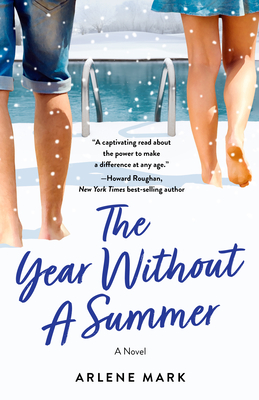 THE YEAR WITHOUT A SUMMER, by Arlene Mark, SparkPress, Aug. 16, 2022, Paperback, $17.95 (young adult, ages 12-16)
THE YEAR WITHOUT A SUMMER, by Arlene Mark, SparkPress, Aug. 16, 2022, Paperback, $17.95 (young adult, ages 12-16)
An eighth-grade science project inspires students to take action in A Year Without Summer, by Arlene Mark.
Explosive volcanic eruptions are cool, really, cool. They inject ash into the stratosphere and deflect the sun’s rays. When eighth-grader Jamie Fulton learns that snow fell in June in his hometown because of an eruption on the other side of the world, he’s psyched! He could have snowboarded if he’d lived back in 1815 during the year without a summer.
Clara Montalvo, who recently arrived at Jamie’s school after surviving Hurricane Maria in Puerto Rico, has a different take all this. She is astounded — and disturbed — by Jamie’s frenzied enthusiasm for what she considers an obvious disaster. The teens’ battling arguments cause science class disruption and create academic trouble: Jamie’s headed for a failing grade in science, and may not even graduate from eighth grade; Clara’s scholarship hopes are dashed.
And school isn’t the only place where Jamie and Clara are facing hardship: as they quarrel whether natural disasters can be beneficial, their home lives are also unraveling. Uncertainty about Jamie’s wounded brother returning from Afghanistan and Clara’s unreachable father back in Puerto Rico forces the two vulnerable teens to share their worries and sadness.
As their focus shifts from natural disasters to personal calamities to man-made climate changes, the teens take surprising steps that astonish them. Ultimately, through hard work and growing empathy for each other, as well as for their classmates’ distress over the climate change affecting their lives, Jamie and Clara empower themselves and the people they touch. —Synopsis provided by SparkPress
There’s a lot going on in A Year Without Summer. Too much going on. Climate change, earthquakes, volcanoes, war in the Middle East, immigration, school drama. The sheer number of topics is overwhelming. Trying to shoehorn all those ideas into one book makes A Year Without Summer less successful than if author Arlene Mark had chosen one or two to explore in depth.
The highlight of A Year Without Summer comes in the debate between Clara and Jamie. This is where science and life collide and Mark seems to hit her stride. (Although I can’t imagine a teacher would be thrilled with the “just Google it” line that gets thrown around way too much.)
When it comes to Clara and Jamie, Clara seems to be the author’s favorite. Clara is, for the most part, well-developed, while Jamie just seems kind of dense. Other than the two attending eighth grade, it’s really hard to get a sense of what age they should be. They often read younger than 13 or 14 and yet the setup sometimes reads more YA.
This book would have benefitted from tighter editing throughout.
The publisher’s suggested age range for A Year Without Summer is 12 to 16, but it’s hard to see older readers engaging with this one. Ages 10 to 14 is a better bet. I suggest checking this book out from the library prior to purchasing.
Copyright © 2022 Cracking the Cover. Unless otherwise noted, all books — digital and physical — have been provided by publishers in exchange for honest and unbiased reviews. All thoughts and opinions are those of the reviewer.
